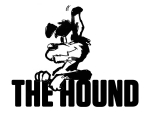Meat and Livestock Australia says while the total volume of lamb exported in 2011 rose only 3%, the historically high prices all year were partially passed through to export markets.
The US remained by far the most valuable market for Australian lamb, value growing 19%, despite shipments up just 1%, to A$350 million. The value of Middle East shipments were steady at A$216 million, even though volume fell 5%.
Lamb exports to Greater China were A$117 million with the 24% year-on-year increase in receipts outpacing the 15% rise in volumes. The value of lamb exports to the European Union rose 24% to A$108 million.
Despite the similarity in value of lamb exports to these two regions, Australia exported less than half the volume of lamb to the EU as to Greater China, reflecting the much higher unit value of lamb sent to the EU.
Meantime, MLA say South Korea imports of sheep meat rose 19% last year to a record 4992 tonnes. The growth was driven largely by rising volumes of Australian lamb.
Australian sheep meat accounted for almost 85% of total South Korean imports: New Zealand product made up the remaining 15%.
While South Korea does not differentiate between lamb and mutton – calling it all sheep meat – Australian export figures showed 75% of total shipments were lamb and 25% mutton.
Australian lamb exports to South Korea have increased 177% in 10 years; mutton volumes increased 25%.
The Korea Times reports an increase in Chinese and Middle Eastern restaurants there, and consumers
are developing an appetite for sheep meat.
















